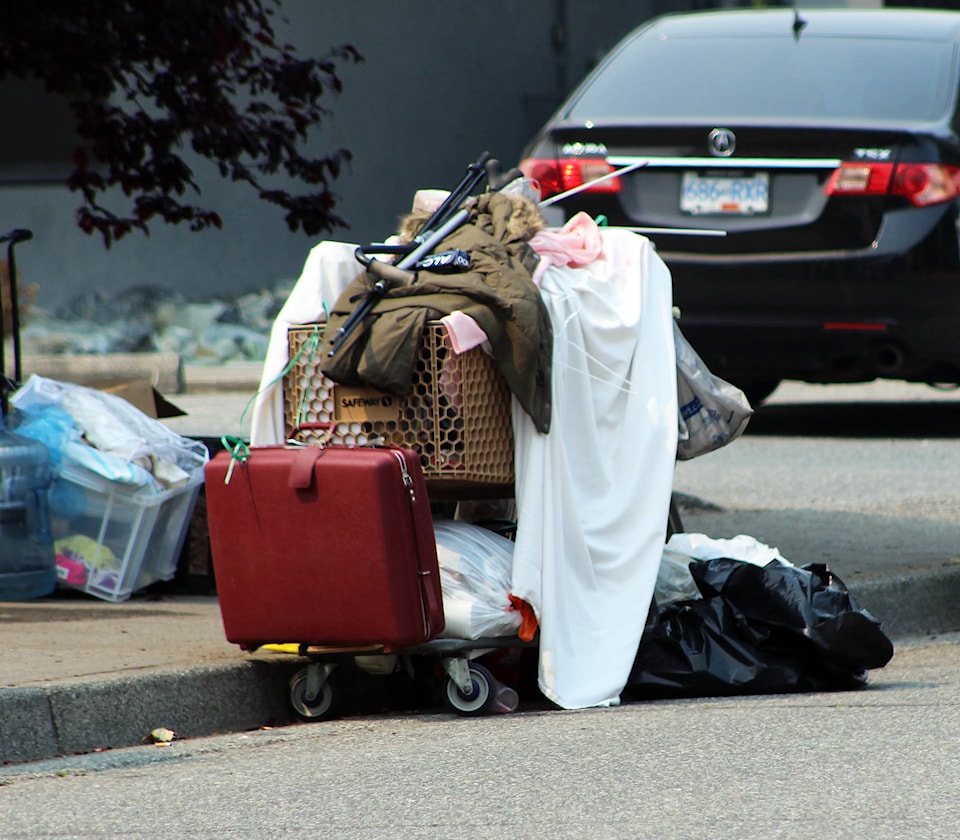Mission’s mayor and council are looking outside the district for help following a July 22 staff presentation detailing final results of this year’s homeless count.
The number of homeless people has almost tripled from 63 people in 2017, to 178 in 2020 – more than any other municipality in the Fraser Valley Regional District (FVRD).
RELATED: Mission’s homeless count nearly triples in 3 years
“I am concerned that Mission has lagged behind,” said Mayor Pam Alexis. “Some of these issues have crept up and now are basically hitting us over the head.”
Every city in the FVRD saw an increase.
The total count for Abbotsford, Mission, Chilliwack, Hope and Boston Bar rose from 606 persons in 2017, to 895 in 2020.
The district’s numbers show the largest per-capita increase in the entire region – jumping from 0.16 per cent to 0.44 per cent. Mission’s total population account for 15 per cent of the Fraser Valley, yet take up the largest proportion of the region’s homeless at 19 per cent.
The district alone doesn’t have the capacity to address some of the implications of the report, such as the need for more services, the increase of homeless seniors, and people with acquired brain injury (often the result of overdoses), said Kirsten Hargreaves, the district’s manager of social development and presenter of the report.
“All of these represent bringing in more systems and having specific conversations,” she said. “We need some concentrated time to come together with some of our bigger systems and bigger players.
We’re very quickly growing from a smaller community to a mid-sized community, we’re really seeing that, which means our responses need to change as well.”
RELATED: Spike in homeless count not a surprise to Mission mayor
Federal grants for homelessness are typically allocated for major urban areas and small rural and remote communities lacking adequate services, Hargreaves said.
“We are too big for the rural and remote pots [of money] and we’re too small for some of the bigger urban pots. It’s left us in this awkward middle ground.”
Consistent advocacy has resulted in recent changes at the federal level for some of these grants, she said. For instance, $41,000 was received under the Reaching Home grant for COVID-19 relief work through the district’s social service agencies.
The issues of chronic homelessness (72 per cent of the population without a home for over a year), and the high percentage of people who grew up in the care of the state (29 per cent) were highlighted by councillor Danny Plecas.
The report shows that district has 52 youth going in and out of foster care and 45 per cent of population say their homelessness is related to family and relational breakdowns.
“Where is the Ministry of Social Family and Health Services? They’re really the provider of services to youth and youth coming out of care,” Plecas said. “I think that it’s appropriate to have an expectation there.”
He suggested asking whether the school district would be able to provide some additional support, but said that working with provincial and regional organizations are key steps forward.
“We’re a piece of the puzzle and we need support from these agencies to bring it together,” he said. “My concern is that this is going to keep going like this and there’s no answers and we can only do so much.
“We have lots of community support and good leadership in the community, yet we can’t piece it totally together, we’re lacking some components.”
Alexis said she has reached out to Judy Darcy, Minister of Mental Health and Addictions, and the FVRD is looking at trying to apply for additional funding from the province ahead of Mission’s Affordable Housing Strategy and poverty reduction workshops in the fall.
Councillor Jag Gill inquired about whether the district was actively looking for more land for more shelter space and affordable housing, saying its concerning that reports shows 46 per cent say they don’t use shelter because of lack of space. The district has added just seven full-time shelter spaces, but more than doubled extreme-weather beds since 2017.
“We’ve got some projects coming, but it’s been a really long drawn out process,” said Alexis.
